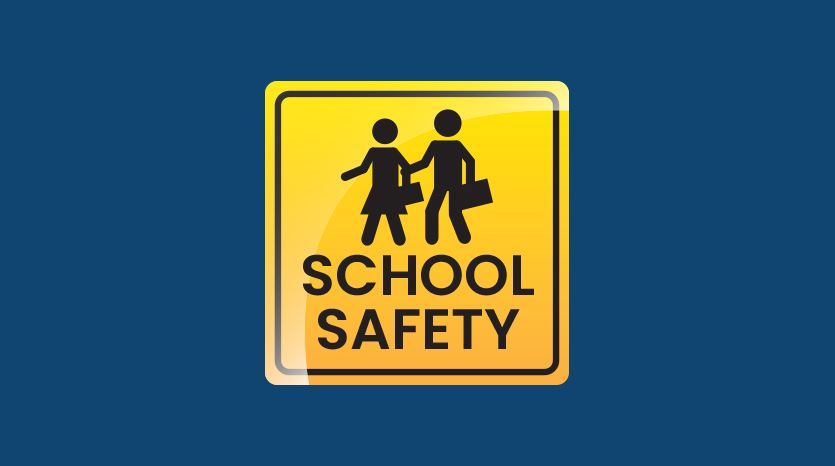
Despite intensified efforts to protect our students from school shootings, the numbers continue to climb. In fact, the number of shootings with casualties at K-12 schools has increased since the 2012-13 school year, when there were 22 shootings, and reached 93 shootings in 2020-21, according to the National Center for Education Statistics.
After each shooting, there are a flurry of initiatives, hand waving and public debate about how we can better protect our students. Everything from gun control to better mental health services are bandied about and all too often, there are no substantial changes made.
Clearly, school safety is a complex problem. And there are no pat answers.
On one end, many argue that more “hardening” is required to make schools safer. This includes hiring more security guards and police, installing surveillance cameras and metal detectors, adding fences outside playgrounds, creating one point of entry, and drilling students for the possibility of an active shooter.
Others argue that such security measures have not always translated to better security.
“Schools over the past couple decades have increasingly become more characterized by security measures,” said Chris Curran, an education researcher at the University of Florida. “The tricky balance for schools is we don’t want them to look like forts. We want students to go to a place where it’s welcoming, it’s open, where they’re happy to be there.” (source: ChalkBeat, May 2022).
Proposals are being put forth that espouse taking a more holistic approach. Ron Avi Astor, a professor of social welfare and an expert on school violence at the University of California, Los Angeles, is part of a group of researchers who recently published an eight-point plan for preventing school shootings. It calls for making school climates safer from bullying and harassment, improving mental health services, and curtailing access to firearms across the country. The group’s gun-safety recommendations include a ban on assault-style weapons, background checks on all gun purchases and laws that allow for the removal of firearms “when there is a clear threat of lethal violence.” (source: Time.com, June 15, 2022)
Against this backdrop it’s not surprising that the average American is a bit confused about the best course of action. That’s why we commissioned a series of one-question surveys (administered via Google Surveys) designed to get a better pulse of American adults, and the results may surprise you.
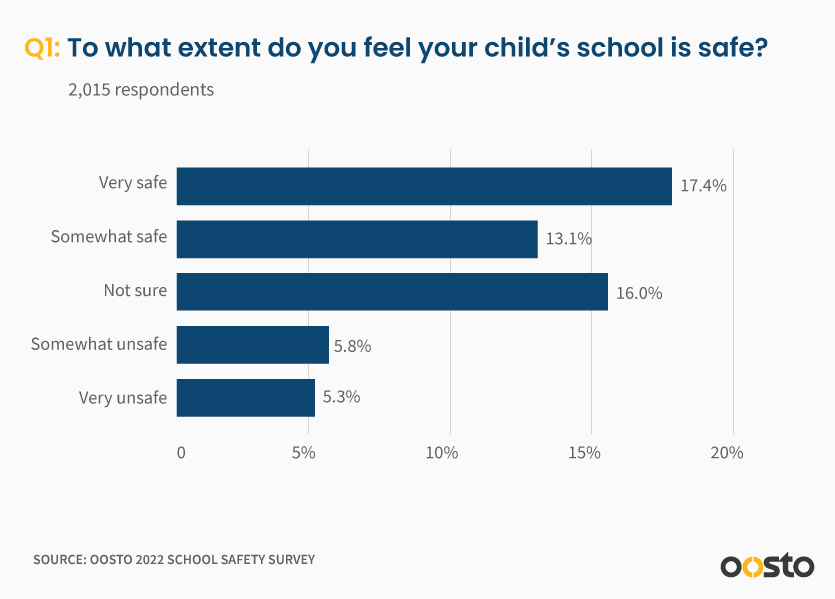
The good news is more than 30% feel their school is either very safe or somewhat safe. More troubling is that 11% of respondents stated that their child’s school is either somewhat or very unsafe. That’s an alarmingly high result.
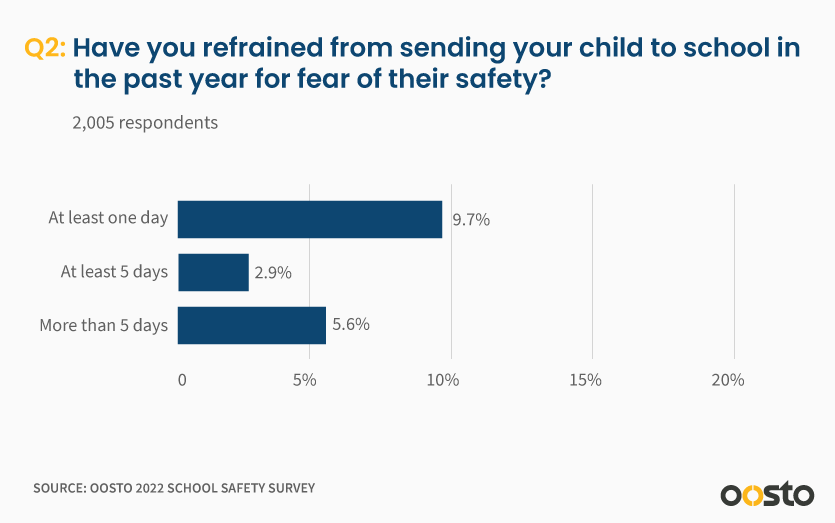
18% of respondents have refrained from sending their child to school in the past year for fear of their safety. NOTE: Safety in this context could also be related to Covid-related concerns as we did not define “safety” as “safe from gun violence.” More moms (11.3%) than dads (10.1%) perceived that their children’s schools were somewhat or very unsafe.
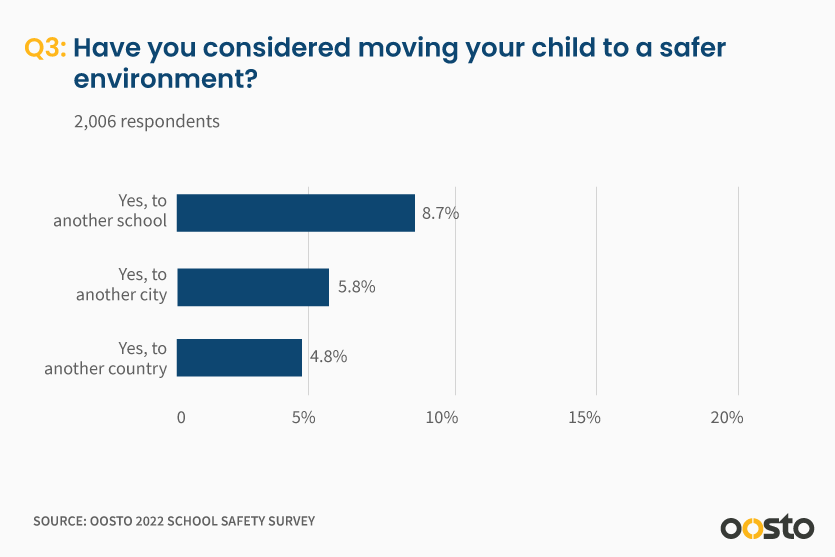
20% of respondents considered moving their child to another school, city, or country; of that number, more men (11%) than women (9%) wanted to make the move for their children. This speaks to the level of unease that parents are experiencing in the wake of school violence. Unsurprisingly, respondents from Texas (9%) showed the highest # of respondents across 50 states who wanted to move to another country, followed by New York at 8%.
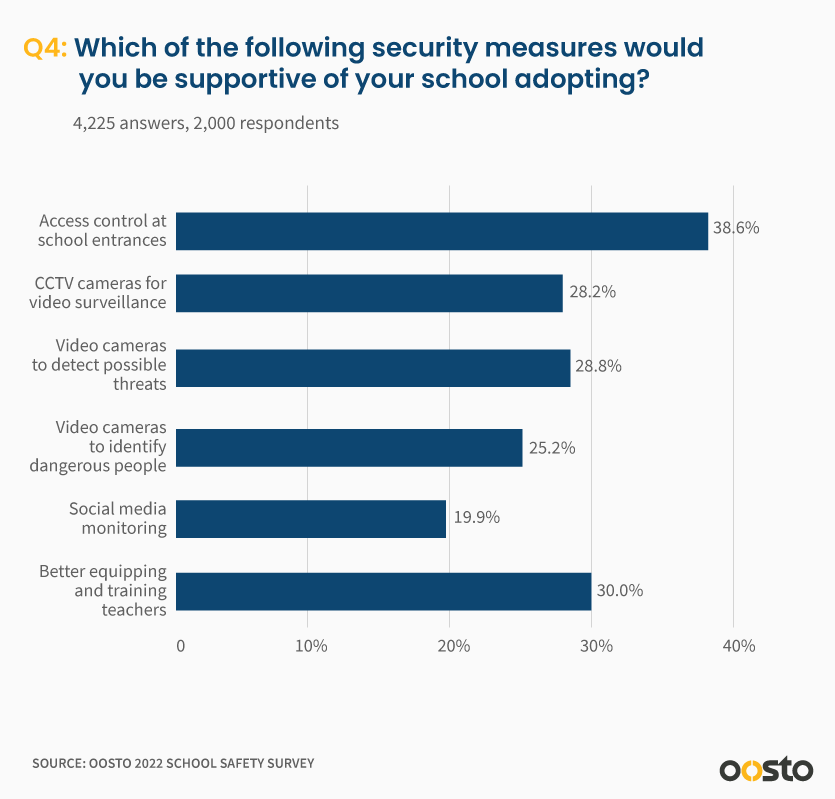
Access control as a security measure was most supported by parents surveyed, followed by an overwhelming majority of respondents who supported the use of cameras for video surveillance to detect possible threats, or identify dangerous people. A significant number of respondents (30%) were supportive of better equipping and training teachers.
It’s clear that school security is thorny and complex and that there’s no silver bullet. But, it’s also clear that hardening a school’s security needs to be at least one prong of the solution.
“Unifying things like cameras, access control, doors, HVAC, and fire systems” is critically important, according to Guy Grace, K-12 Unified Security Consultant at Apple to Apple LLC. “Things like facial recognition enhance your ability to detect, deter, and deny” bad actors from entering school grounds.
But these hardening measures must be done without turning our schools into prisons or fortresses.
 Vision Al Blog
Vision Al Blog



